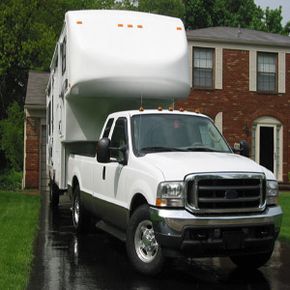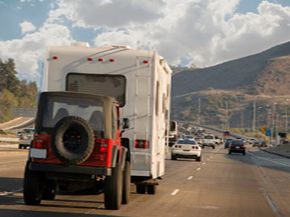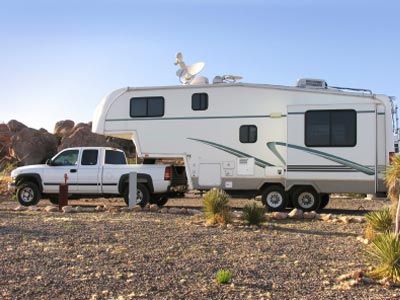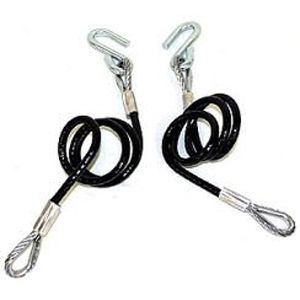You've got your motor home, your itinerary and a little car to tow behind for day trips. Several towing equipment options exist for bringing your vehicle along with you, including trailers, tow dollies and tow bars. The easiest and cheapest solution for your towing problem is to use a tow bar.
Unlike trailers or tow dollies, a tow bar pulls the car behind the motor home on all four of the car's own wheels. It can be stored easily and involves the least amount of towing equipment. A tow bar also takes up fewer parking spaces than a trailer or dolly. There are three types of tow bars: self-aligning motor home-mounted tow bars, self-aligning car-mounted tow bars and rigid A-frame tow bars. All of these types of tow bars have one piece attached to the RV near the bumper and one piece attached to the vehicle to be towed. In the case of rigid A-frame tow bars, the tow bar is mounted on the frame of the RV, with a receiver mounted under the frame of the car.
Advertisement
The A-frame tow bar is a solid, welded tow bar that starts and stays in the same rigid position. In contrast, the arms of self-adjusting tow bars extend and contract to allow proper positioning. The tow bar then extends to a rigid tow position as the motor home pulls ahead. As their names imply, the self-aligning tow bars allow you to drive the car close to the motor home and adjust the tow bar to the car's position. The rigid A-frame style doesn't offer this kind of adjustment help when hooking a vehicle up to its cargo.
Because of their relative simplicity, A-frame tow bars are the lightest and cheapest towing equipment an RV enthusiast can buy. Now that we know what they are, let's find out how they work.
Advertisement





